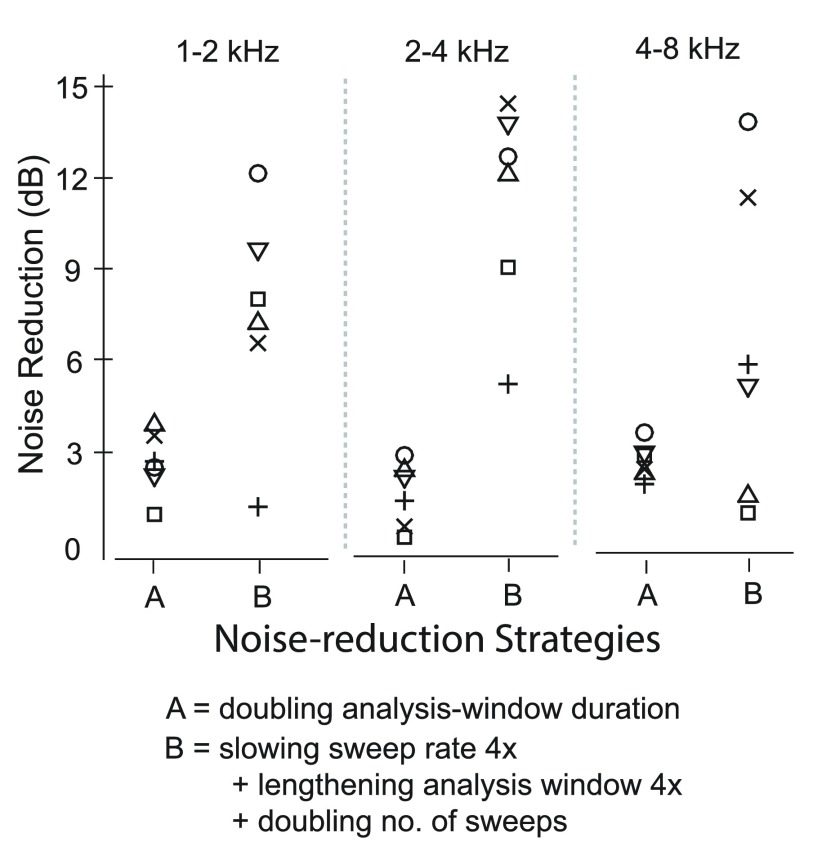FIG. 12.
The effect of two strategies on noise estimates in 10 neonates (each ear denoted by a separate symbol). “Noise reduction” is the improvement in noise floor re: baseline (analysis window of either 31 or 62 ms depending on frequency, and sweep rate of 0.5 octave/s) The larger the dB value, the more effective the noise reduction. Strategy A shows that the doubling of analysis windows produces approximately 2 dB reductions in noise floor (as expected from data shown in Fig. 7) for all newborns across frequency. Strategy B shows data from the same newborns after applying combined modifications: (1) slowing down the sweep rate to 0.125 octave/s; (2) lengthening the analysis window to 500 ms; and (3) doubling the number of sweeps contributing to each average. These combined strategies produce additional noise floor reductions, some as great as 14 dB.

